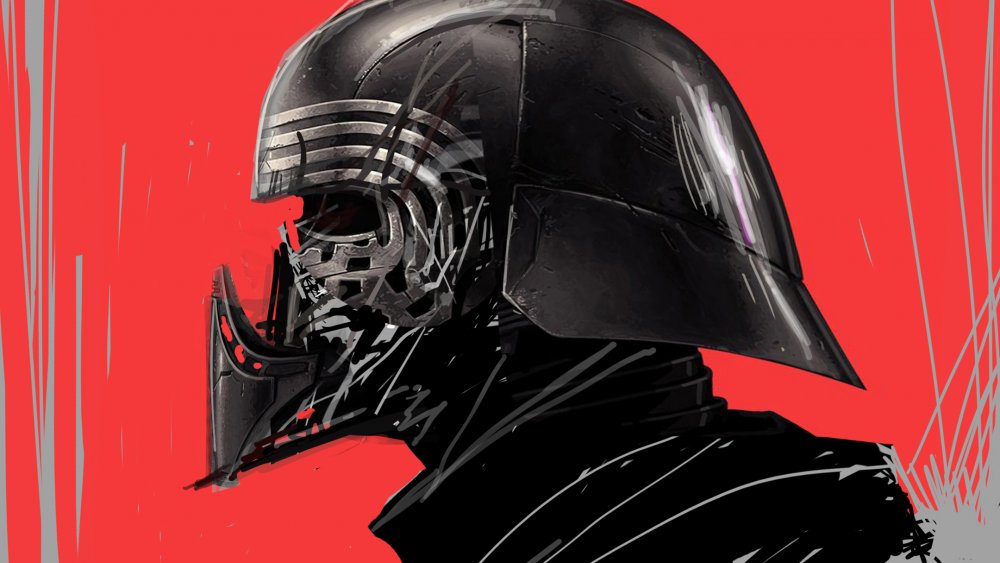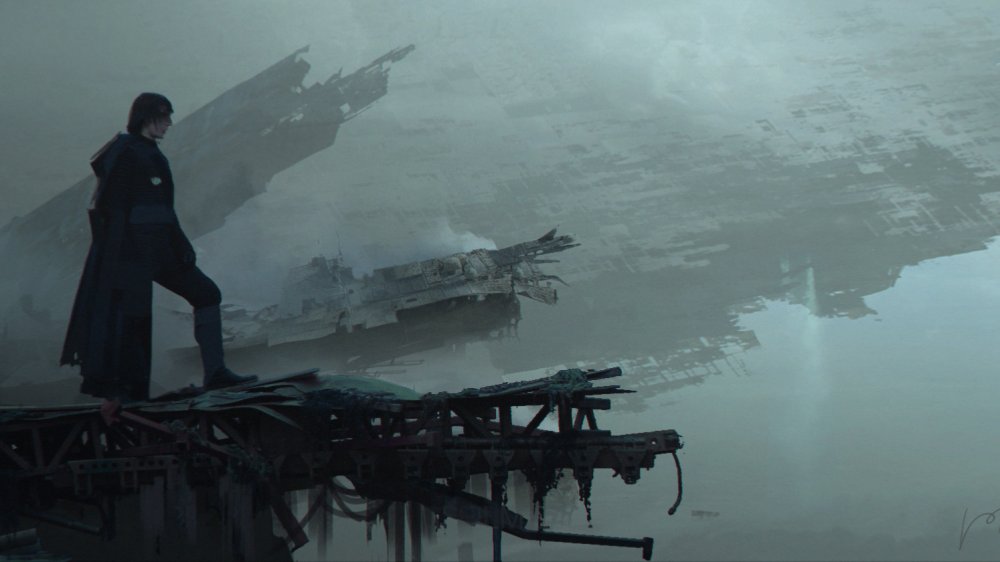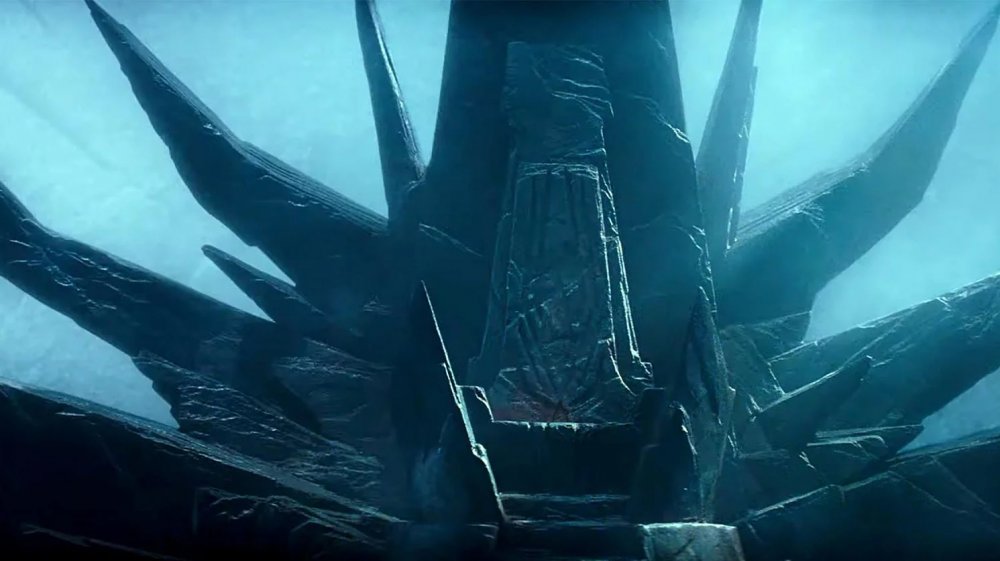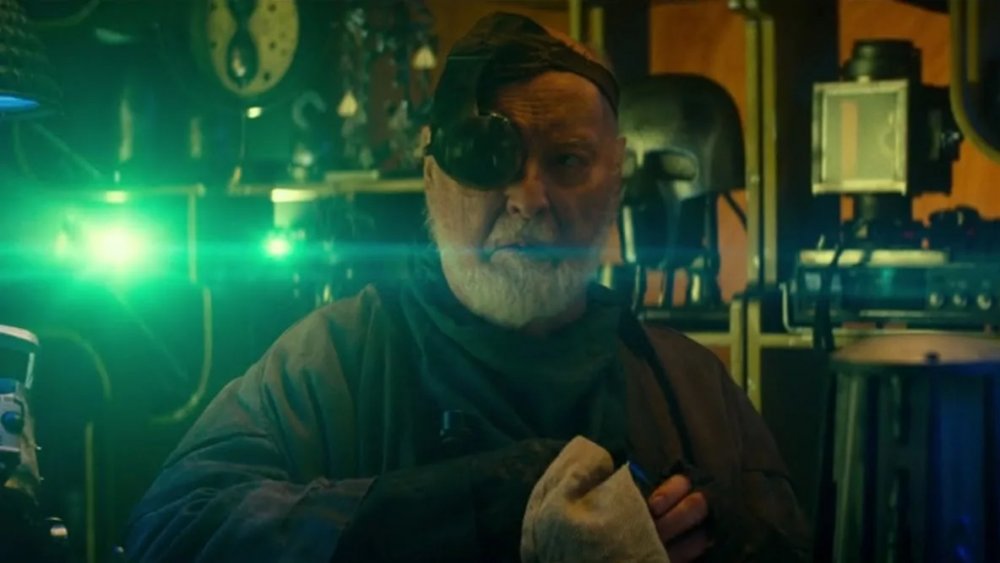Hidden Gems That The Art Of The Rise Of Skywalker Reveals About The Movie - Exclusive
There's a lot more to Star Wars: Episode IX — The Rise of Skywalker than you saw in on the big screen. That's what makes The Art of Star Wars: The Rise of Skywalker so fascinating. Written by creative art manager Phil Szostak, who describes himself as the "art or design equivalent" to Lucasfilm's story group, The Art of Star Wars: The Rise of Skywalker is full of behind-the-scenes details that'll drive fans wild.
Did you know that, at one point, Poe Dameron was going to fly a Y-Wing? That Lando Calrissian's daughter was kidnapped by the First Order? That production actually built a physical puppet of the snake that Rey heals in the caves under Pasaana's surface, only to replace it with a CGI creature in post-production? That Leia Organa's role in the movie as both Rey's mentor and Kylo Ren's salvation was planned as early as 2014?
It's all in the book — as are hundreds of stunning pieces of art that show how The Rise of Skywalker's creatures and machines developed over time and that offer intriguing glimpses at what could've been. Here are some of the most interesting pieces of trivia that The Art of Star Wars: The Rise of Skywalker has to offer, along with commentary from Szostak himself, although it's not close to everything the book has to offer. Trust us, this thing is packed.
Originally, Kylo Ren was going to meet a character named the Oracle in The Rise of Skywalker, and he looked super creepy
One thing that becomes very clear while reading The Art of Star Wars: The Rise of Skywalker is that, while the major beats were all in place early on, smaller plot details were in flux right up until shooting began. Zorii Bliss was originally just one of a group of spice runners. Babu Frik began life as two separate characters: a diminutive creature who used to clean Star Destroyer engines, and a reclusive, blind shipbuilder. On Mustafar, Kylo Ren was going to meet a grotesque creature called the Oracle, who would help point him towards Exegol.
"The Oracle, which of course wasn't in the final film, is kind of a fascinating part of the book," Szostak tells Looper in an exclusive interview. Early versions of the Oracle were spider-like with sunken eyes, but one of the artists' takes on the creature pushed the character in a totally different direction.
"Jake Lunt Davies' instinct to give it this big baby head, which is a very kind of Miyazaki-inspired look, informed the way the character was expressed in the script and what they shot," Szostak explains, using the Oracle as an example as to how the concept art process can influence the storyline in the final film.
At one point, the Oracle was also going to be surrounded by skulls that resembled classic Star Wars characters like Kit Fisto and meme star Admiral Ackbar, too. Szostak admits the visual was probably "too dark" for the final film, but he couldn't help including pictures of them in The Art of Star Wars: The Rise of Skywalker anyway.
Apparently, scenes with the Oracle were even shot. Twenty-eight thousand pounds of silicons were used to build the puppet, making "it the biggest silicon pour" the Lucasfilm team had ever done, while ten puppeteers controlled the creature's eyes, body, legs, and face. That's a lot of work for something that never made it to the screen, although Szostak remains hopeful that the Oracle scenes will eventually see the light of day.
George Lucas didn't work on The Rise of Skywalker, but his influence is all over the movie
The Art of Star Wars: The Rise of Skywalker is a book-length tribute to the creative minds behind the Skywalker Saga, including the man who started it all, George Lucas. "We're always thinking about George and we talk about George all the time in the art department," Szostak says, further noting that capturing the original trilogy's design sense was key to making The Rise of Skywalker and the rest of the sequel trilogy work.
"In a weird way, it's a very Zen thing. It's like the aesthetic of Star Wars is no aesthetic," Szostak explains. "The designs are obviously worked on with a lot of effort, but the way that they're expressed in the film is very casual. Everything's kind of mixed and matched." Like the real world, the Star Wars universe is a jumble of different looks. That's what gives it its iconic lived-in feeling.
The Rise of Skywalker team even looked at some of the concept art created for Lucas' original Star Wars trilogy during the design phase. While Palpatine and Exegol aren't in The Art of Star Wars: The Rise of Skywalker – "There's no grand conspiracy here," he notes, adding that he was just trying to keep Palpatine's role in the story from leaking while the book and film were both still in production — Szostak says that the Emperor's throne was based on a drawing created by legendary Star Wars artist Ralph McQuarrie for The Return of the Jedi.
Not that Rise of Skywalker's artists were constrained by these nods to the past, however. In fact, according to Szostak, the artists had more room to play on The Rise of Skywalker than in any other film in the sequel trilogy. "The Force Awakens was tough, because it was partly kind of rediscovering and remembering like what the Star Wars aesthetic was," Szostak says. "With this film, I think there's more freedom to explore and get a little wild and try some new things and push the limits a bit."
The Rise of Skywalker is filled with Easter eggs fans have yet to find
By now, fans have identified many of the Easter eggs hidden in The Rise of Skywalker, but The Art of Star Wars: The Rise of Skywalker reveals even more. As also noted in the documentary The Skywalker Legacy, composer John Williams is surrounded by props referencing his 51 Academy Award wins when he makes his brief cameo. Kylo Ren's all-white sanctuary is a nod to the end of Stanley Kubrick's 2001 — and there's even a HAL 9000 hidden in the set.
Of course, Szostak has a favorite Easter egg in the movie: the prequel-era battle droid hidden in Babu Frik's workshop. "I have a particular fondness for Doug Chiang's design of the battle droids from the prequel trilogy," Szostak explains. "I especially love how they kind of mirror their creators. In the case of the battle droids, they look like the Geonosians, the insect dudes with the wings. The clone trooper armor is white and has the big eyes like the Kaminoans who created the clones."
As Szostak notes, The Rise of Skywalker focuses more on the original Star Wars trilogy than anything else, but Episode IX closes off the entire Skywalker Saga, prequels included. "Just cool to put a touch of the prequels in there in a real subtle way," Szostak says.
The Art of Star Wars: The Rise of Skywalker comes out on March 31, 2020.



